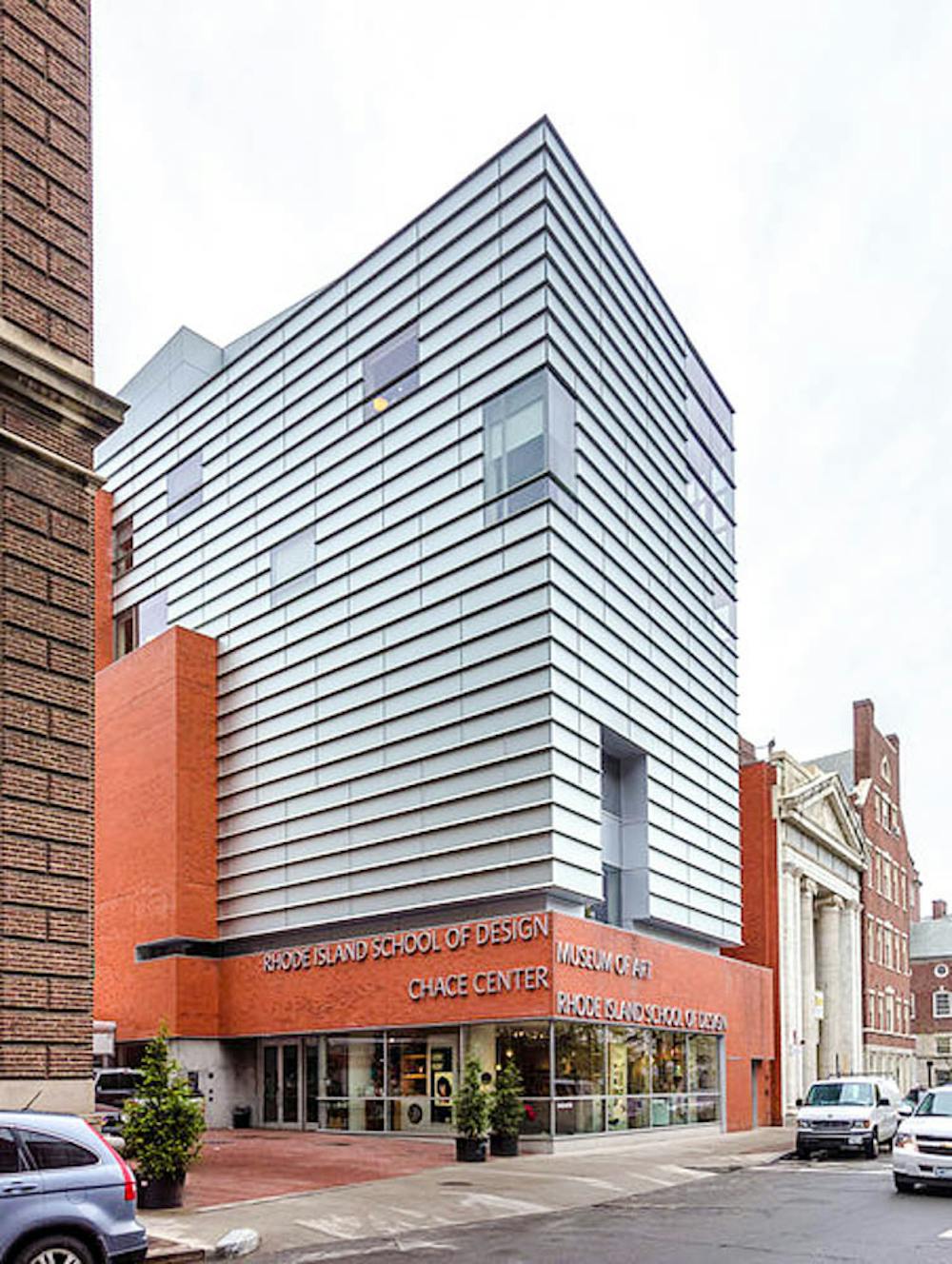“He remembers those vanished years. As though looking through a dusty windowpane, the past is something he could see, but not touch. And everything he sees is blurred and indistinct.” This quote from the 2000 film “In the Mood for Love” by director Wong Kar-wai serves as a common thread in the latest exhibition of the same name, which opened at the Rhode Island School of Design Gelman Student Exhibitions Gallery Nov. 29. As if sweeping the dust off the windowpanes, curators of the exhibition, RISD seniors Christine Cho, Emi Chun and Zak Nguyen, presented a show that featured works by Asian/American and Pacific Islander/American identifying artists, which shed light on the collective memories of their multiple identities.
Growing up with varying backgrounds, the curators recognized the diversity within Asian populations. They further acknowledged the “carelessness” of the term “pan-Asia,” Cho said. Nguyen said that the show is not solely about Asian identity, but also “how that interacts with other identities.”
When selecting art for the show, the curators sought to include a wide spectrum of artists. “Someone who is queer and Asian has an equally important voice as somebody who is disabled and Asian or someone who was adopted,” Nguyen said.
As co-presidents of the RISD Asian Intersection + Diaspora, the three curators purposed the exhibition as a representation of their existences that have otherwise been “flattened” by the surrounding spaces, Chun said. In an effort to highlight the varying ways Asian identity is experienced, Chun said that their intent was to provide “a space within those intersections to exist,” and to “find that moment of safety in between all those intersections where we can have different conversations that are relevant to our existence here in RISD and the diaspora of living in this country.”
Although unique in their experiences and backgrounds, each artist generated work that converses with other exhibited work, Nguyen said. “One of the most important lines in our statement was the fact that even though the artists may not even know it, we’ve always been in conversation with each other in one way or another,” Chun said.
Among the featured pieces is an animation created by RISD senior Xiner Jiang, which depicts a woman whose features seem distorted and restructured with each change in frame. Right across from the video is a series of three photographs taken by Jono Cheong, also a RISD senior, featuring a cowboy with a powdered white face and red blush. Both works similarly challenge Western beauty standards.
When visiting the exhibition, there are “themes you begin to see … you can begin to notice overlaps,” Cho said.
Artists grappled with themes including conflicting standards of beauty and cis-heteronormativity, traversing of multiple realities, burdens of family expectations and renewed memory of intergenerational traumas. The conversations exchanged in the artworks “reaffirm that our experiences were real, not skewed by our insecurities,” Cho said. “We’re in a space where the artists are thinking similar ideas. It becomes a moment of collective memory.”
While providing a space that allows the artists’ voices to be expressed authentically, the curators acknowledged that the efforts of vocalizing Asian/American and Pacific Islander/American identities do not stop in the gallery. When talking about the inspiration behind choosing the title “In the Mood for Love,” Cho said that when she wascurating, she discovered “so many more rich connections and omens” between Wong Kar-wai’s film and the Asian/American community at RISD. “It is not enough just to have this show and benefit from it and move on. We have to really continue to challenge our community, not only thinking about what solidarity looks like within the Asian/AAPI community, but also with other (people of color),” she added.





